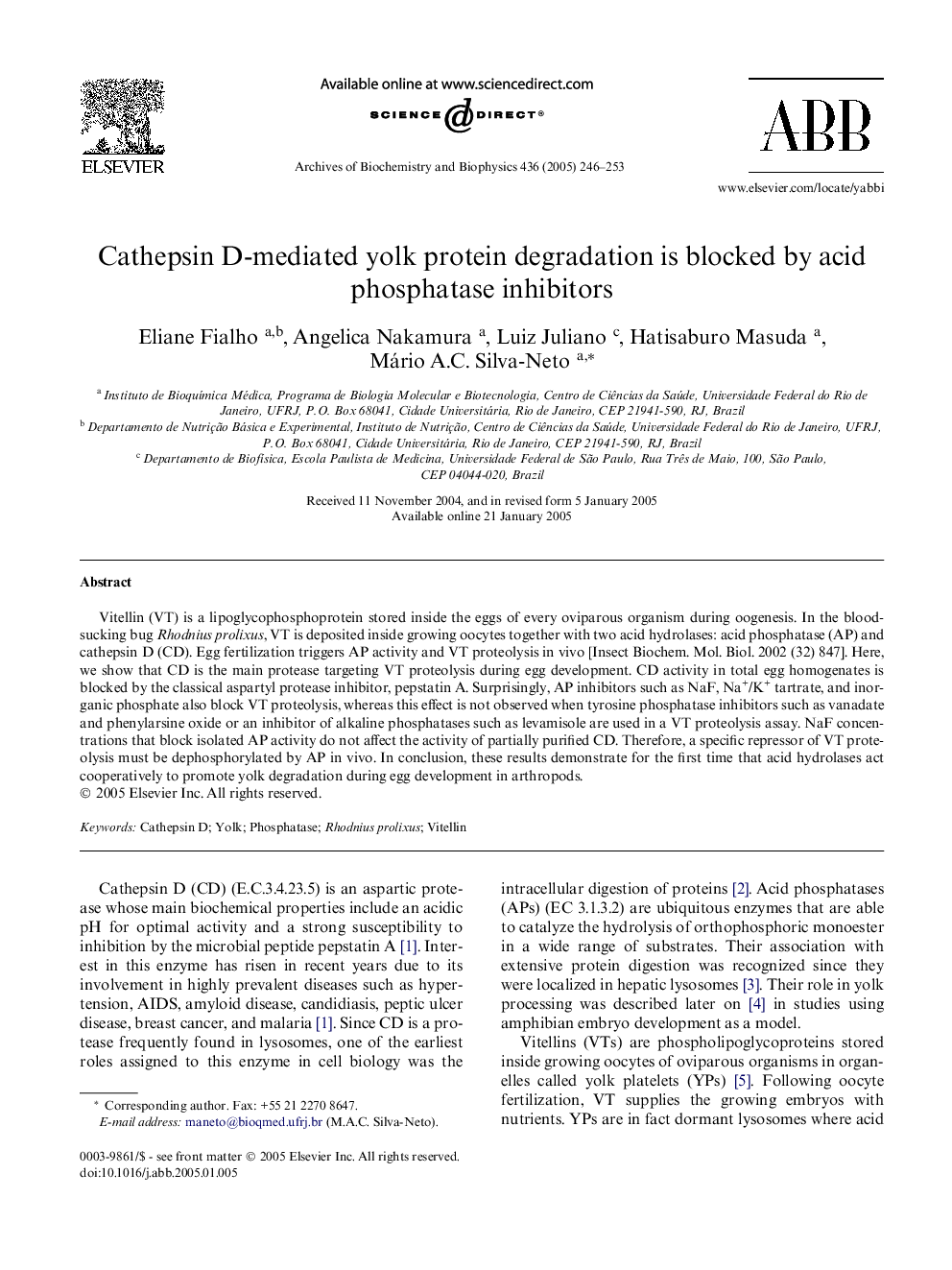| Article ID | Journal | Published Year | Pages | File Type |
|---|---|---|---|---|
| 9882242 | Archives of Biochemistry and Biophysics | 2005 | 8 Pages |
Abstract
Vitellin (VT) is a lipoglycophosphoprotein stored inside the eggs of every oviparous organism during oogenesis. In the blood-sucking bug Rhodnius prolixus, VT is deposited inside growing oocytes together with two acid hydrolases: acid phosphatase (AP) and cathepsin D (CD). Egg fertilization triggers AP activity and VT proteolysis in vivo [Insect Biochem. Mol. Biol. 2002 (32) 847]. Here, we show that CD is the main protease targeting VT proteolysis during egg development. CD activity in total egg homogenates is blocked by the classical aspartyl protease inhibitor, pepstatin A. Surprisingly, AP inhibitors such as NaF, Na+/K+ tartrate, and inorganic phosphate also block VT proteolysis, whereas this effect is not observed when tyrosine phosphatase inhibitors such as vanadate and phenylarsine oxide or an inhibitor of alkaline phosphatases such as levamisole are used in a VT proteolysis assay. NaF concentrations that block isolated AP activity do not affect the activity of partially purified CD. Therefore, a specific repressor of VT proteolysis must be dephosphorylated by AP in vivo. In conclusion, these results demonstrate for the first time that acid hydrolases act cooperatively to promote yolk degradation during egg development in arthropods.
Related Topics
Life Sciences
Biochemistry, Genetics and Molecular Biology
Biochemistry
Authors
Eliane Fialho, Angelica Nakamura, Luiz Juliano, Hatisaburo Masuda, Mário A.C. Silva-Neto,
